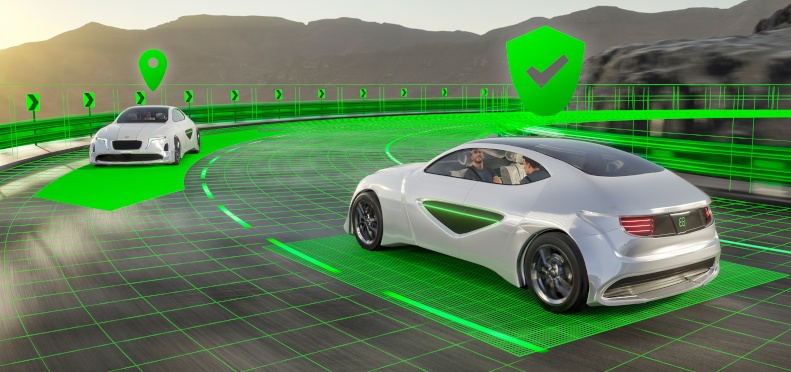
Wouldn’t the roads be safer if everyone obeyed the speed limit?
But what if your car could not only tell you how fast you were allowed to drive, but actively helped you to avoid speeding in the first place?
Well, this vision of safer driving will soon become a reality, following the 2019 EU General Safety Regulations (GSR) announcement that Intelligent Speed Assistance – known as ISA – will become a compulsory feature in most vehicles starting in 2022. The new rules will initially apply to all “M” and “N” category vehicles – including cars, vans, trucks, and buses – and will become a mandatory feature in all new European vehicles from 2024. The primary goal of the ISA regulation is to make drivers aware of the legal speed limit regardless of location, weather, or the time of day, and to help them reduce speeding by engaging helpful driver-assist functions.
For some motorists, the concept of speed-limiting technologies may seem strange, perhaps even a little heavy-handed. But like other common vehicle functions such as adaptive cruise control, lane departure warnings, and electronic stability control, ISA is designed as an intuitive feature that enhances the driving experience.
A technology that will save thousands of lives
In countries all over the world, speeding is one of the leading causes of severe road accidents. Exceeding the legal speed limit doesn’t just raise the chances of losing control or colliding with other vehicles, but it also increases the severity of crashes when they occur.
According to the EU Mobility and Transport Commission, there were approximately 22 800 fatalities and 120 000 serious injuries on European roads in 2019. And while the number of deaths has actually declined over the last decade – down by 23% since 2010 – the figures are still far higher than previous EU targets. In order to reduce speeding and improve vehicle and passenger safety, the European Transport Safety Council has identified ISA as one of the most critical new safety measures and predicts that its mass adoption can reduce serious road accidents by up to 30% and fatalities by up to 20%.
In countries throughout the EU, there is a significant variance in the frequency of physical speed limit signs. For example, they are widespread in Norway and the United Kingdom, but appear far less frequently in Spain and the Czech Republic. To compound the issue, many speed limits are implicit based on the location, weather, or even the time of day, often leading to confused motorists unaware that they are exceeding the speed limit.
The mandatory adoption of Intelligent Speed Assistance is one of the most important vehicle safety changes in recent years. Still, most drivers are not yet familiar with how ISA works, or the ways that it enhances the on-road experience. This article will provide a closer look at technologies that make ISA possible, their impacts on drivers and automakers, and the wider benefits of this life-saving technology.
A control level to suit every driver and vehicle
Although all Intelligent Speed Assistance systems share the goals of reducing speeds and increasing safety, not all of them work in the same way. The levels of functionality range from simply alerting you when you’re exceeding the speed limit (much like some GPS systems do now) to engaging physical measures that reduce your acceleration – either optionally or automatically.

Here are the three different ways that Intelligent Speed Assistance systems can work in a vehicle:
- Advisory: The ISA system continually displays the current speed limit on the dashboard and warns you with an alarm and/or visual alert if you’re driving too fast.
- Voluntary: The ISA system warns you when you’re speeding, but then can optionally engage measures to limit your top speed. As the driver, you can choose to keep accelerating by pushing down more firmly on the foot pedal, but you may receive another speed warning when doing so.
- Automated: The ISA system automatically limits your vehicle’s top speed to keep it under the identified legal speed limit. You still retain the ability to override the system by choice, or if it is required in an emergency situation
It’s important to remember that ISA is designed to improve safety and comfort on the road while assisting in challenging or confusing situations. The speed-limiting functions work with the driver’s natural intuitions, serving as a helpful prompt that prevents accidental or unintended acceleration.
How does a vehicle determine the speed limit?
There are several different ways that automakers can implement an ISA architecture, depending on their preferences, type of vehicle, and the level of technical sophistication in a given model:
- Cameras only
Some ISA systems use front-facing vehicle cameras to read physical road signs and display the speed limit on the dashboard. These systems often capture speed limit information missed by the driver due to high speeds or distraction. However, much like a human’s vision, they are still limited to the visual information in the immediate area. - Electronic horizon + digital maps
This system utilizes an electronic horizon, a software system drawing crowdsourced navigation and road event data from the cloud, combined with a digital mapping system to provide highly accurate positioning. This implementation uses location technology to provide reliable speed limit information regardless of the environmental conditions (such as low visibility), and the absence of external cameras makes it affordable in a broader range of vehicle types. - Cameras + electronic horizon + digital maps
This advanced solution fuses multiple technologies to provide speed limit information, using an electronic horizon, digital maps, and visual data captured by the vehicle’s onboard cameras. While being the most accurate ISA system and using advanced vehicle positioning, it is also the most complex and will feature most commonly in higher-end or premium vehicles.
From the examples above, you can see that ISA architectures can take different forms, ranging from basic systems using onboard cameras to sophisticated architectures combining multiple technologies. These systems will continue to evolve through continual development, testing, and user feedback, until they become as common and practical as the most basic driver-assist functions already in use today.
Lower driving costs, and better for the environment
In addition to improving road safety, Intelligent Speed Assistance systems will also deliver many other benefits that might not be obvious at first glance.
Firstly, they will help vehicle owners to reduce costs by way of receiving fewer speeding tickets and achieving higher levels of fuel or battery efficiency. A report by the Road Safety Authority of Ireland concluded that the mandatory adoption of ISA could increase fuel economy by up to 11% in addition to improving traffic flow and reducing congestion, particularly on regional and local roads.
Secondly, there are also environmental benefits to ISA systems, as vehicle speeds are directly linked to the CO2 emissions of internal-combustion vehicles and the range (and therefore energy use) of electric vehicles. It is expected that ISA will reduce exhaust emissions from petrol and diesel vehicles by up to 8%, and reduce the energy demands of electric vehicles by extending the travel distances between charges.
With additional benefits for both motorists and the environment, ISA technology will quickly become a popular feature in new vehicles and play a role in reducing carbon emissions across the EU.
Higher safety ratings for car makers
The implementation of Intelligent Speed Assistance systems will also have a direct impact on vehicle safety ratings, helping to improve brand confidence and build stronger trust between drivers and their vehicles.

The European New Car Assessment Programme (NCAP) – a voluntary car safety testing program that provides independent consumer information – has actively promoted ISA technology as a practical and effective safety feature. ISA systems that correctly identify speed limits and act accordingly can earn automakers up to 20 additional safety points, particularly more advanced architectures fusing cameras, an electronic horizon, and digital HD maps.
And in addition to improving road safety, Euro NCAP has also found that ISA systems do not cause any significant distractions to drivers, making it a technology that will quickly become a valuable and intuitive feature of all modern vehicles.
Discover more about Intelligent Speed Assistance
You can also download a free copy of our ISA white paper created in collaboration with Continental and HERE Technologies, exploring ISA development, use cases, and the broader impacts on the automotive industry.









